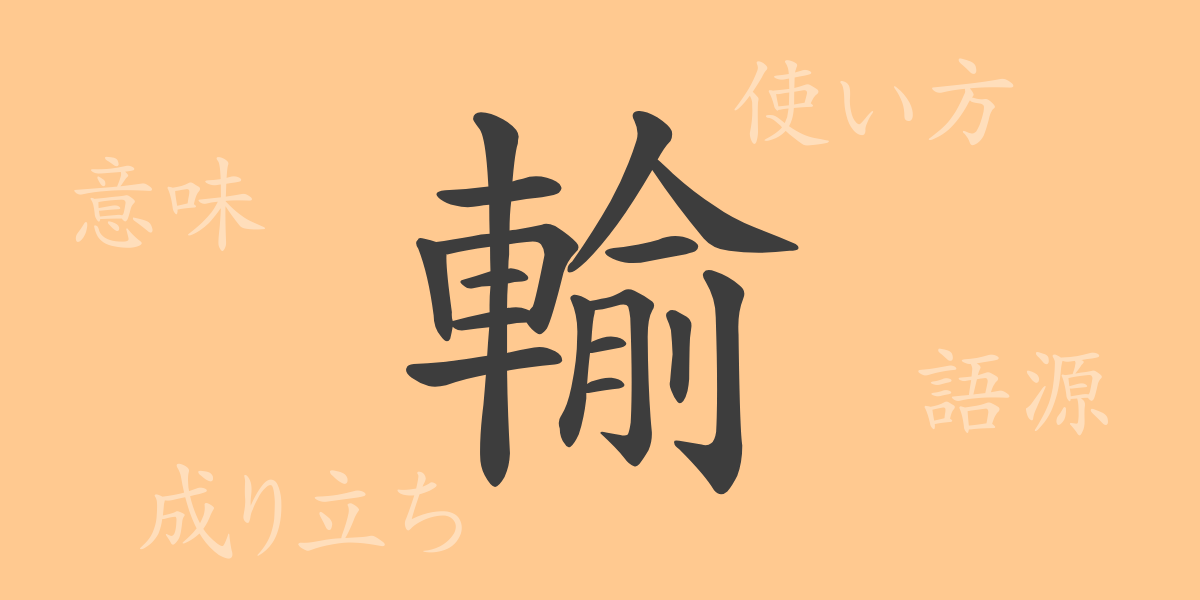Japanese culture is rich with characters. Among them, the kanji “輸” (yu) plays a significant role in our daily lives. In this article, we will shine a spotlight on the character “輸” (yu), delving into its origin, meaning, usage, and even exploring idioms and phrases. Let’s step into the world of “輸” (yu), which embodies the beauty and complexity of the Japanese language.
The Origin of 輸 (yu)
The kanji “輸” (yu) is a character that originates from ancient China, with its form derived from the radical “車” (sha), symbolizing a vehicle. Historically, it meant a vehicle used for transporting goods, and from there, it expanded to mean “to carry” or “to transport.” Additionally, because vehicles in ancient times were valuable, it also carries the nuance of transporting valuable items.
Meaning and Usage of 輸 (yu)
In modern Japanese, “輸” (yu) is primarily used to mean “to carry” or “to transport.” In economic activities, it appears in terms such as “輸出” (yushutsu, export) and “輸入” (yunyu, import) to indicate the flow of goods between countries. In fields like sports, it appears in terms such as “輸血” (yuketsu, blood transfusion) and “輸送コスト” (yusou kosuto, transportation cost). This kanji is an essential element when expressing concepts of movement and exchange.
Reading, Stroke Count, and Radical of 輸 (yu)
The kanji “輸” (yu) has several basic pieces of information when used in Japanese.
- Reading: On’yomi (音読み) is “ユ” (yu), no Kun’yomi (訓読み)
- Stroke count: 16 strokes
- Radical: 車部 (shabu, vehicle radical)
Idioms, Phrases, and Proverbs Using 輸 (yu)
There are many idioms, phrases, and proverbs that include “輸” (yu). Here are some examples:
- 輸出 (yushutsu) – Sending goods or services abroad.
- 輸入 (yunyu) – Bringing goods or services from abroad.
- 輸送 (yusou) – Transporting goods or personnel from one place to another.
- 輸血 (yuketsu) – Transferring blood into the human body in medical contexts.
- 輸送機 (yusouki) – Vehicles or airplanes used for transporting goods or personnel.
These idioms and phrases are excellent examples of how “輸” (yu) is used in Japanese.
Summary of 輸 (yu)
The kanji “輸” (yu) began with ancient Chinese vehicles and is now used in various fields such as international trade, medicine, and transportation. Its readings and rich meanings demonstrate the flexibility and expressiveness of the Japanese language. Understanding idioms and phrases that include “輸” (yu) will deepen your knowledge of Japanese. The “輸” (yu) you see in daily life may now hold new meanings for you.
“`

























